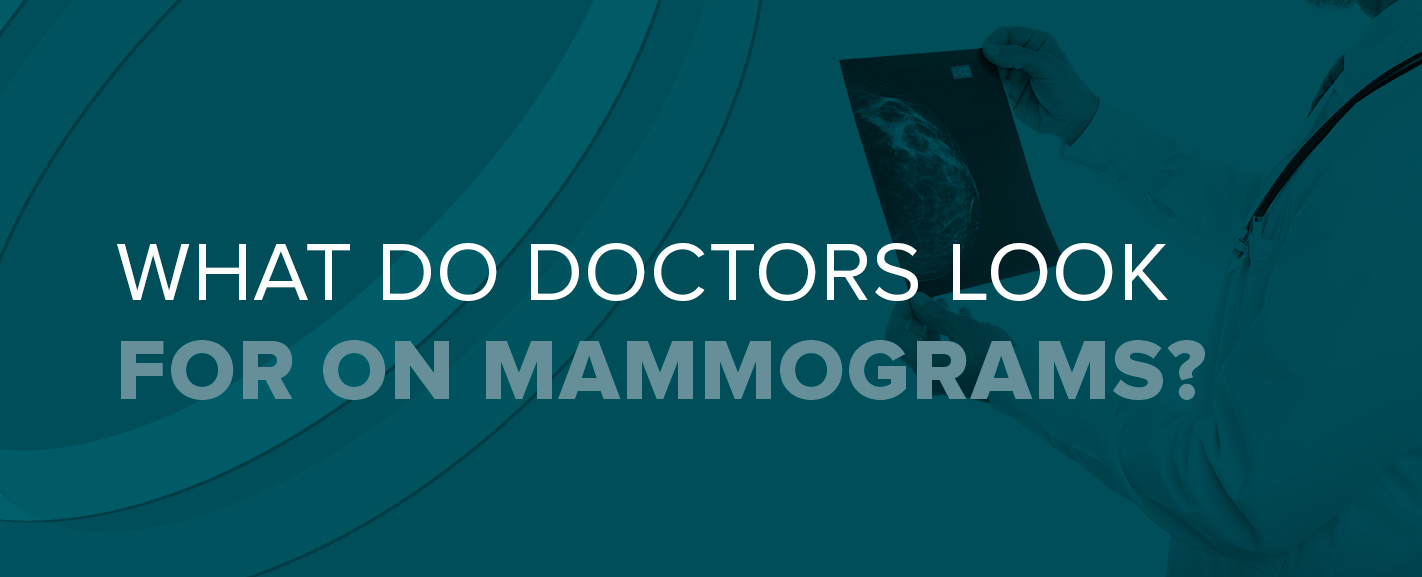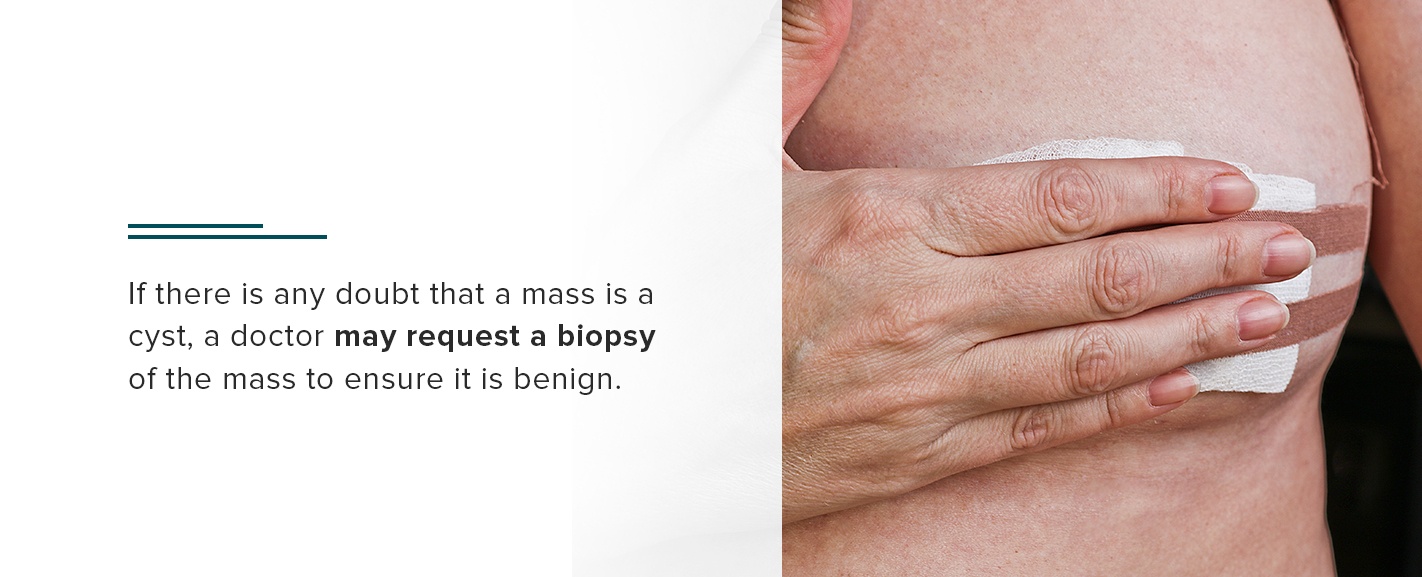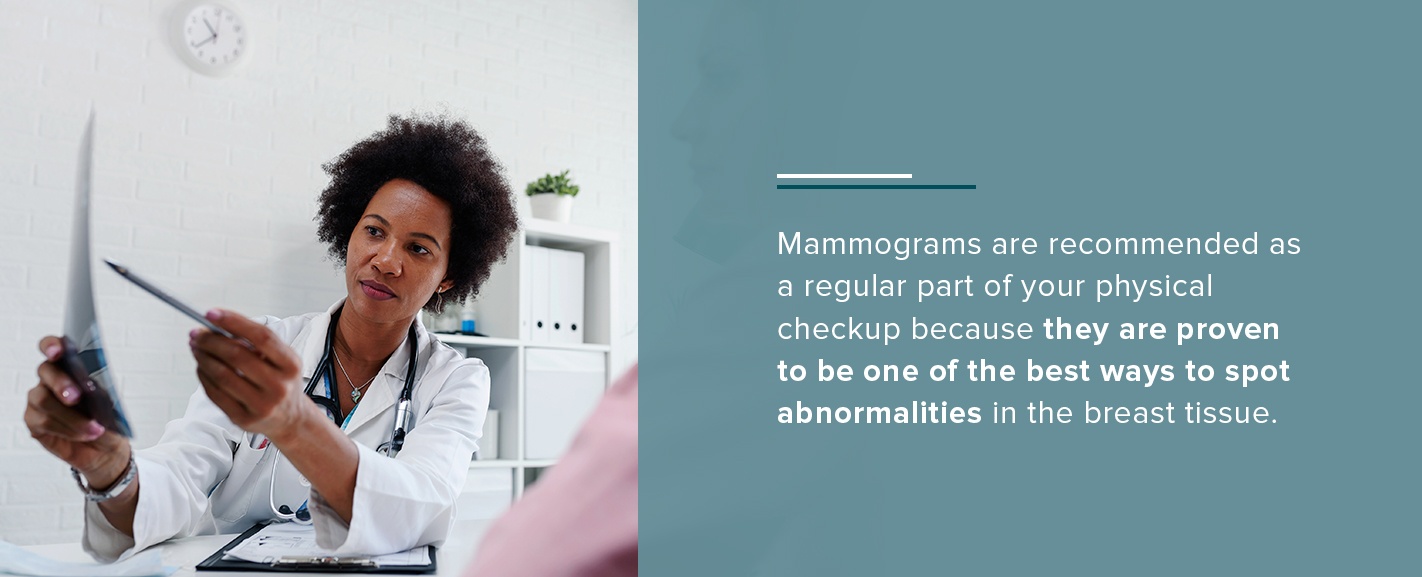What Do Doctors Look for on Mammograms?
 Mammograms are one of the best and most effective ways to detect abnormalities in breast tissue, including cancer. Getting a mammogram can be an uncomfortable experience, but the end result is worth it. Just what do radiologists look for in a mammogram?
A radiologist will look at the mammogram images to find any sort of changes in your breast tissue. They’ll do this by comparing your most recent mammogram to your previous ones. They’ll look for calcifications, masses or other changes that are suspicious or signal the potential of breast cancer.
Mammograms are one of the best and most effective ways to detect abnormalities in breast tissue, including cancer. Getting a mammogram can be an uncomfortable experience, but the end result is worth it. Just what do radiologists look for in a mammogram?
A radiologist will look at the mammogram images to find any sort of changes in your breast tissue. They’ll do this by comparing your most recent mammogram to your previous ones. They’ll look for calcifications, masses or other changes that are suspicious or signal the potential of breast cancer.
What Is Calcification?
Calcifications are small deposits of calcium found in the breast tissue. Despite their name, calcifications are not related to your calcium intake, and they’re not signals of upcoming breast cancer. Instead, they’re the result of your body changing in some way. For example, menopause often triggers an increase in calcification due to changes in the non-cancerous cells in the body. A history of radiation therapy or the presence of breast cysts are two more of the many reasons for calcification. Breast calcification is essentially the body’s way of revealing that something is changing in the breast tissue. When a radiologist finds calcifications on a mammogram image, they know to do more tests to establish the cause of the calcification. Though there are numerous non-cancerous reasons for calcification on mammograms, one of the reasons could be a marker for developing breast cancer. There are two types of calcification:- Macrocalcification: As the name suggests, these calcifications show up as larger spots on a mammogram. They are most often the result of age-related, non-cancerous changes in the body. Because they become more common as you age and are unlikely to be cancerous, there’s usually no reason to perform a biopsy on macrocalcifications.
- Microcalcification: Unlike macrocalcification, microcalcification shows up as a small spot on a mammogram and is more likely to be a marker for cancer. However, the likelihood of microcalcification being a marker for cancer depends on the shape and layout of the calcification. A biopsy is only needed if the radiologist finds the microcalcification suspicious.
What Is a Mass?
An area of breast tissue with a distinct shape is usually a mass. Breast masses often have edges, making them easy to spot among the rest of the breast tissue. A breast mass on a mammogram can show up with or without calcification. Masses on their own deserve further investigation since they are changes in the breast tissue. Breast masses can end up being anything from a harmless cyst to a sign of cancer. Cysts are small, non-cancerous sacs that are filled with fluid. Solid masses, such as fibroadenomas, can be more concerning and require further investigation. Usually, a simple cyst can be spotted and identified easily and doesn’t need any further action. However, if there is any doubt that a mass is a cyst, a doctor may request a biopsy of the mass to ensure it is benign. The doctor may also request a breast ultrasound, which allows the cyst to be seen more clearly — especially whether it’s fluid-filled or solid.
Solid masses are generally tumors that can be benign or cancerous. Fibroadenomas that are cancerous look no different than non-cancerous ones, which is why a biopsy is usually necessary to determine whether it’s cancerous or not. Regardless of the type, masses are also likely to feel similar. Though masses vary in density, studies have shown that masses with higher densities are more likely to be indicators of cancer.
Some cysts and fibroadenomas can only be discovered on mammograms, making mammograms all the more necessary for keeping up with breast health.
Cysts are small, non-cancerous sacs that are filled with fluid. Solid masses, such as fibroadenomas, can be more concerning and require further investigation. Usually, a simple cyst can be spotted and identified easily and doesn’t need any further action. However, if there is any doubt that a mass is a cyst, a doctor may request a biopsy of the mass to ensure it is benign. The doctor may also request a breast ultrasound, which allows the cyst to be seen more clearly — especially whether it’s fluid-filled or solid.
Solid masses are generally tumors that can be benign or cancerous. Fibroadenomas that are cancerous look no different than non-cancerous ones, which is why a biopsy is usually necessary to determine whether it’s cancerous or not. Regardless of the type, masses are also likely to feel similar. Though masses vary in density, studies have shown that masses with higher densities are more likely to be indicators of cancer.
Some cysts and fibroadenomas can only be discovered on mammograms, making mammograms all the more necessary for keeping up with breast health.
What Is Breast Density?
All breasts are different. Some breasts tend to have more fibrous or glandular tissue, making them denser. All breasts are made up of glandular tissue, fibrous tissue and ducts, as well as fat. A high breast density is often the result of having more glandular or fibrous tissue in the breast than fat. Generally, high breast density isn’t an issue. However, very dense breasts can make it difficult to spot masses. This can put an individual at a higher risk of breast cancer — especially if they do not receive regular mammograms and perform self-examinations of the breasts. If you have high breast density but you’re not at risk of breast cancer and your previous mammograms have been clear, it’s unlikely you’ll need to go for additional testing. But if you are at a higher risk for developing breast cancer— like if you have a family history of breast cancer or are in remission from breast cancer — your doctor may order further image testing just to be safe. Breast density, like most things about the human body, can change over time. Some people find their breast tissue begins to thin out as they get older, while others live with dense breast tissue their whole lives.The Importance of Mammograms
An important truth about breast cancer is that it’s far easier to treat when discovered in the early stages. The longer it goes undiagnosed, the more difficult it can be to treat — and the treatment can be more of a strain on your body. Mammograms are recommended as a regular part of your physical checkup because they are proven to be one of the best ways to spot abnormalities in the breast tissue. While abnormalities are an expected part of the human body, it’s important to make sure the changes are the result of something normal, like aging, rather than something abnormal, like mutated cells.
Though self-tests at home are beneficial for spotting more prominent changes, a mammogram can help spot crucial changes that cannot be felt.
Mammograms are recommended as a regular part of your physical checkup because they are proven to be one of the best ways to spot abnormalities in the breast tissue. While abnormalities are an expected part of the human body, it’s important to make sure the changes are the result of something normal, like aging, rather than something abnormal, like mutated cells.
Though self-tests at home are beneficial for spotting more prominent changes, a mammogram can help spot crucial changes that cannot be felt.
Schedule Your Mammogram With Envision Imaging or The Women’s Center at Colorado Springs Imaging
Whether you’re due for a mammogram or have a concern about your breasts, you can easily schedule a mammogram with Envision Imaging or The Women’s Center at Colorado Springs Imaging. With multiple locations across the United States, our trained professionals provide top-quality care using our state-of-the-art diagnostic services. We know exactly what to look for in a mammogram, and our experienced staff will make sure you get first-class care and the answers to any questions you may have. You don’t need a doctor’s referral to set up a mammogram, so find the location closest to you and schedule your mammogram today.Call To Schedule Your Appointment
Sources:- https://www.breastcancer.org/symptoms/testing/types/mammograms/mamm_show/calcifications
- https://www.cancer.org/cancer/breast-cancer/non-cancerous-breast-conditions/fibroadenomas-of-the-breast.html
- https://www.ncbi.nlm.nih.gov/pmc/articles/PMC3029888/
- https://www.cancer.org/cancer/breast-cancer/screening-tests-and-early-detection/mammograms/breast-density-and-your-mammogram-report.html
- https://www.envrad.com/locations/


